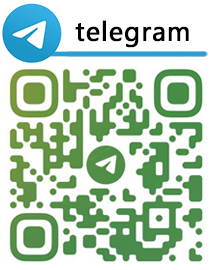boot sector virus elk cloner | elk cloner virus boot sector virus elk cloner "Elk Cloner"— self-replicating like all other viruses— bears little resemblance to the malicious programs of today. Yet in retrospect, it was a harbinger of all the security .
C$439.00. IN STOCK AT WAREHOUSE* SKU: 972-01-490. A lightweight chassis, EVOL air spring, and dual piston damper with 3-position switch create a pedal-friendly shock that soaks up the bumps and delivers pedal power to the ground with utmost efficiency. * To check in store availability: Size : 7.5 x 2. 7.875 x 2.25. Quantity: + - Add to cart.
0 · how to delete elk cloner
1 · elk cloner wiki
2 · elk cloner virus
3 · elk cloner infection
Best Nevada Flight Deals. Cheapest round-trip prices found by our users on KAYAK in the last 72 hours. One-way Round-trip. Las Vegas nonstop $77. Reno 1 stop $151. Good to know. Best time to beat the crowds but there is an average 6% increase in price. Most popular time to fly with an average 13% increase in price. Flight from Fresno to Las Vegas.
how to delete elk cloner
chloe rose
The boot sector virus was written for Apple II systems, the dominant home computers of the time, and infected floppy discs. If an Apple II booted from an infected floppy disk, Elk Cloner became . Elk Cloner is one of the first known microcomputer viruses that spread "in the wild", created by Rich Skrenta in 1982 as a prank. It was a boot sector virus that attached itself . An ingenious piece of primitive malware, Elk Cloner wasn’t quite the unpredictable and uncontrollable virus one might imagine. When infecting a new device, it imprinted a . The virus targeted the boot sector of various storage media including HDDs, SDDs, flash drives, and floppy discs. Once an Apple II system booted from an infected disc, Elk Cloner permanently embedded itself into the .
Elk Cloner, 1982: Viewed as the first virus to hit personal computers worldwide, Elk Cloner spread through Apple II floppy disks and displayed a poem written by its author, a ninth .
"Elk Cloner"— self-replicating like all other viruses— bears little resemblance to the malicious programs of today. Yet in retrospect, it was a harbinger of all the security . Richard Skrenta’s “Elk Cloner” was 400 lines long and disguised as an Apple boot program. Described by its author as “some dumb little practical joke,” the virus attached itself to the Apple DOS 3.3 operating system and .An example of one type of Apple II malware was called “Elk Cloner”, it was created by Richard Skrenta a 15-year-old high school student. It infected the systems using the “boot sector” technique which means that if the user booted .Elk Cloner spread by infecting the Apple DOS 3.3 operating system using a technique now known as a boot sector virus. It was attached to a program being shared on a disk (usually a game).
Elk Cloner is a boot sector virus that invades a computer's hardware. It was written for Apple II systems in assembly language and infected floppy disks. In addition to infecting its host computer, the virus could also automatically copy itself to other computers via an infected floppy disk.
The boot sector virus was written for Apple II systems, the dominant home computers of the time, and infected floppy discs. If an Apple II booted from an infected floppy disk, Elk Cloner became resident in the computer’s memory. Elk Cloner is one of the first known microcomputer viruses that spread "in the wild", created by Rich Skrenta in 1982 as a prank. It was a boot sector virus that attached itself to the Apple II operating system and spread through floppy disks. An ingenious piece of primitive malware, Elk Cloner wasn’t quite the unpredictable and uncontrollable virus one might imagine. When infecting a new device, it imprinted a signature byte to the host’s disc directory to show that a particular operating system had .
elk cloner wiki
The virus targeted the boot sector of various storage media including HDDs, SDDs, flash drives, and floppy discs. Once an Apple II system booted from an infected disc, Elk Cloner permanently embedded itself into the system’s memory. Elk Cloner, 1982: Viewed as the first virus to hit personal computers worldwide, Elk Cloner spread through Apple II floppy disks and displayed a poem written by its author, a ninth-grade. "Elk Cloner"— self-replicating like all other viruses— bears little resemblance to the malicious programs of today. Yet in retrospect, it was a harbinger of all the security headaches that. Richard Skrenta’s “Elk Cloner” was 400 lines long and disguised as an Apple boot program. Described by its author as “some dumb little practical joke,” the virus attached itself to the Apple DOS 3.3 operating system and spread by floppy disk.
An example of one type of Apple II malware was called “Elk Cloner”, it was created by Richard Skrenta a 15-year-old high school student. It infected the systems using the “boot sector” technique which means that if the user booted up their system from an infected Floppy Disk, a copy of the virus was placed in the memory of the computer.
Elk Cloner spread by infecting the Apple DOS 3.3 operating system using a technique now known as a boot sector virus. It was attached to a program being shared on a disk (usually a game).Elk Cloner is a boot sector virus that invades a computer's hardware. It was written for Apple II systems in assembly language and infected floppy disks. In addition to infecting its host computer, the virus could also automatically copy itself to other computers via an infected floppy disk.
The boot sector virus was written for Apple II systems, the dominant home computers of the time, and infected floppy discs. If an Apple II booted from an infected floppy disk, Elk Cloner became resident in the computer’s memory. Elk Cloner is one of the first known microcomputer viruses that spread "in the wild", created by Rich Skrenta in 1982 as a prank. It was a boot sector virus that attached itself to the Apple II operating system and spread through floppy disks. An ingenious piece of primitive malware, Elk Cloner wasn’t quite the unpredictable and uncontrollable virus one might imagine. When infecting a new device, it imprinted a signature byte to the host’s disc directory to show that a particular operating system had . The virus targeted the boot sector of various storage media including HDDs, SDDs, flash drives, and floppy discs. Once an Apple II system booted from an infected disc, Elk Cloner permanently embedded itself into the system’s memory.
Elk Cloner, 1982: Viewed as the first virus to hit personal computers worldwide, Elk Cloner spread through Apple II floppy disks and displayed a poem written by its author, a ninth-grade. "Elk Cloner"— self-replicating like all other viruses— bears little resemblance to the malicious programs of today. Yet in retrospect, it was a harbinger of all the security headaches that.
Richard Skrenta’s “Elk Cloner” was 400 lines long and disguised as an Apple boot program. Described by its author as “some dumb little practical joke,” the virus attached itself to the Apple DOS 3.3 operating system and spread by floppy disk.


Raph. FRAG Pro Shooter - 3.16 Patch Notes ️. Everything you need to know about FRAG Vol.3 and upcoming challenges! A new challenger | Frag Pro Shooter Teaser ️. New Fragger → Siku. Siku (level 9): Common. General. Hitpoints → 528. Damage/Second → 90. Speed → 11.6 km/h Speed while shooting → 7.8 km/h. Main Weapon: Atlatl Harpoon.
boot sector virus elk cloner|elk cloner virus



























